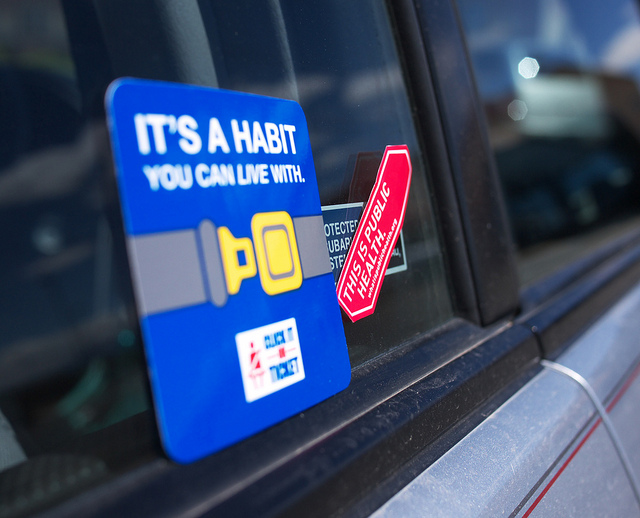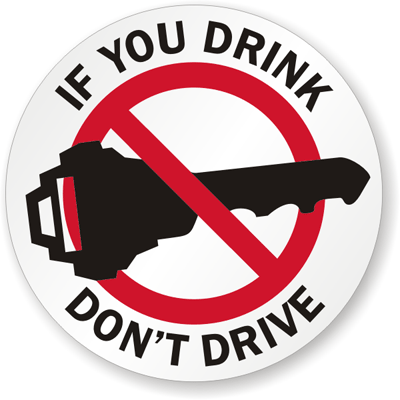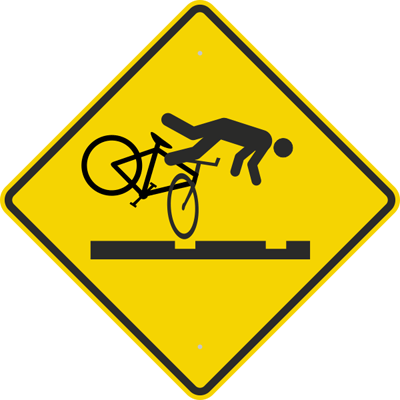Four common fatal accidents and simple ways to prevent them
Each year, thousands of preventable fatal accidents and serious injuries occur. And no wonder: when it comes to safety information, it’s often hard discern between what’s really important and what’s white noise. That’s why we took a close look at safety statistics, identifying the most common fatal accidents, and by extension, the most vitally important safety habits to follow. Below are the top four deadly scenarios and effective ways to stay safe.

In times of a vehicle crash, wearing a seat belt can be the difference between life and death. (Photo by AlamosaCountyPublicHealth used under a Creative Common license).
1. Buckle up.
Can you believe that there are currently 18 states that do not have seat belt laws? Motor vehicle crashes are the leading cause of death in the United States for those under 30, with over 30,000 fatal crashes a year and over two million related injuries. In 2009, a study showed that 53% of drivers that were killed in car crashes were not wearing seat belts.
Seatbelts are imperative when it comes to your safety in vehicles. They are proven ways to reduce the risk of death by 45%, and cut the risk of serious injury by 50%. They do so by preventing drivers and passengers from being ejected from their seats during a crash. Those who do not wear a seat belt are 30 times more likely to be ejected from their vehicle during a crash.
Reduce your risk of death and serious injury with an easy remedy: buckle up!
2. Install an ignition interlock.

Ignition interlocks are new safety measures that prevent vehicle engines from starting if alcohol is detected in a driver’s breath.
Drinking and driving has cut many lives short, especially the young. In 2011, almost 10,000 people died in alcohol-related crashes. Men between the ages of 21 and 34 (11% of the adult population) are disproportionately guilty, responsible for almost a third of all drinking and driving accidents.
While these numbers seem very high, the death toll is actually on the decrease due to a number of recent preventative measures against drunk driving. Dozens of states have passed laws to limit happy hours, and find ever more creative ways to discourage the consumption of excessive amounts of alcohol. Ignition interlocks are becoming popular: an in-car breathalyzer that measures your BAC (Blood Alcohol Content) and will only permit the car to start when levels are sufficiently. The purpose of the interlock is to prevent someone other than the driver from providing a breath sample and starting the engine. In comparison to other, more costly, court punishments, an ignition interlock system is both affordable and life-saving.

Despite the deadly data, there are only 21 states that mandate that those 17 years and younger wear a helmet.
3. Wear a bike helmet.
In the U.S., the notion that bike helmets save lives by preventing head injuries is taken almost as God’s word. So, why are helmet laws in the U.S. so relaxed?
In 2011, 677 bicyclists died on U.S. roads. The most serious bike crash-related injuries are to the head, highlighting the importance of wearing a helmet. Head injuries can range from massive head trauma, like a cracked skull, to lesser, but still fatal injuries like concussions. Shockingly, ninety-one percent of the cyclists who died in 2011 were not wearing helmets.
Helmet use has been estimated to reduce head injury by 85 percent. Protect your head!
4. Always put kids in booster seats.
Motor vehicle injuries are one of the leading causes of death among children in the U.S. A recent study showed that in an average year, over 1000 children, aged 14 years and younger, died as passengers in a car crash. Pair that shocking statistic with the fact that over 600,000 children aged 0-12 ride in cars each year without the use of a booster seat, child safety seat, or a seat belt.
Booster seats are vital when it comes to a child’s safety because they raise a child high enough for proper seat belts positioning. However, most restraint systems are used incorrectly and can actually increase a child’s risk of injury during a crash. When properly installed, a booster seat has been proven to reduce injury risk by 59%. Make your vehicle safer for children – it’s that simple.
Category: News, Safety Tips











